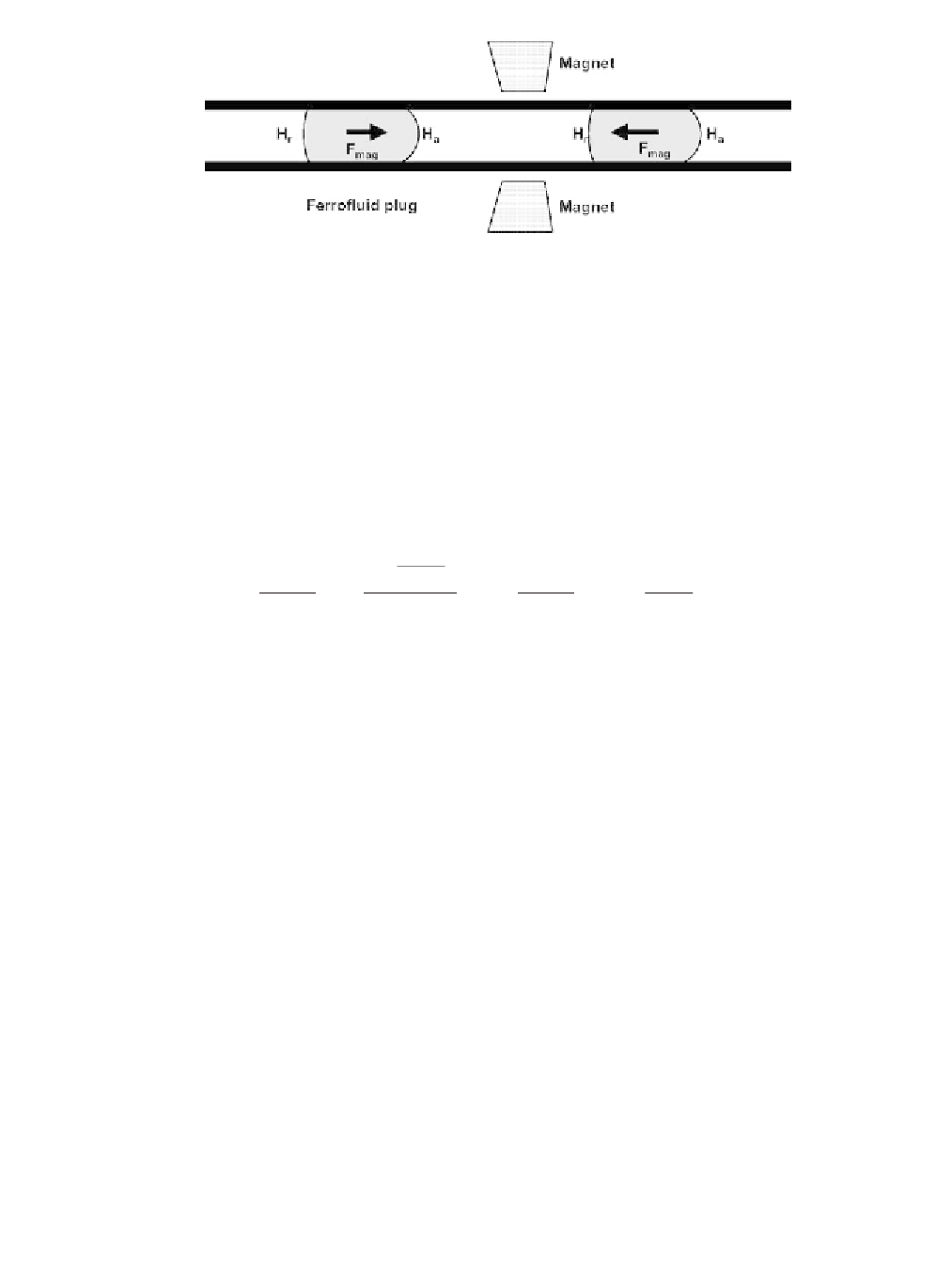Biomedical Engineering Reference
In-Depth Information
Figure 9.37
Schematic view of a plug approaching a magnet. The fluid flow is directed from left to
right. The magnetic force on the plug is always directed towards the magnet.
Note that an exact derivation may be done for any magnetic field by integrating the
full Langevin's formulation [28]
M
æ
3
χ
H
ö
1
=
coth
-
(9.50)
ç
÷
3
χ
H
M
è
M
ø
s
s
M
s
resulting in the expression
H
a
é
ù
æ
ö
æ
3
χ
H
ö
H
sh
ê
ú
a
ç
÷
é
2
ù
ç
÷
2
2
æ
ö
µ
M
è
M
ø
µ
M
æ
3
χ
H
ö
0
s
ê
s
ú
0
s
ê
ú
P
Ln
ç
÷
D
=
+
coth
(9.51)
ç
÷
mag
ç
÷
3
χ
H
3
χ
ê
ú
2
è
M
ø
ê
è
ø
ú
ç
÷
s
ë
û
ê
ú
ç
÷
H
M
r
è
ø
s
ë
û
Hr
This result shows that, at low magnetic field, it is the difference of the squares of
the magnetic field at the interfaces that determines the magnetic force on the plug. The
interface nearest to the magnet is dominant in (9.49) or (9.51) and the force on the
ferrofluid plug is always directed towards the magnet. If the force is sufficient,
the magnet will block the plug and the flow in the capillary will stop.
9.12.3 Notes
One has to be cautious with the use of magnetic liquids: they are not biocompatible—
for example they block PCR—and they often must be separated from the biofluid
by a secondary plug, usually made of oil, for biocompatibility.
9.13 Magnetic Micromembranes
In this chapter, we are dealing with magnetic micro- and nanoparticles, and it seems
interesting to present a very useful application of magnetic microparticles in bio-
technology. In this section, we show how magnetic nanoparticles can be assembled
inside a PDMS matrix to form a magnetic micromembrane. The advantage of such
membranes is that they can be actuated externally (from outside the microdevice)
by a time-varying magnetic field.


